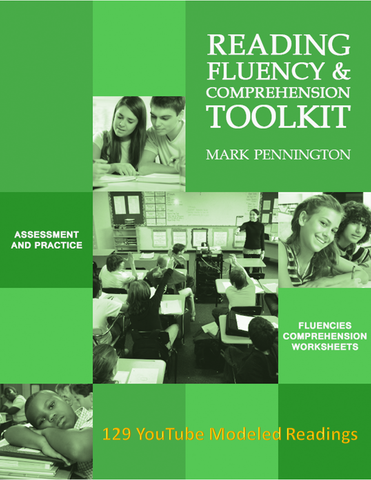
Reading Fluency and Comprehension Toolkit
Reading Fluency and Comprehension Toolkit provides 43 expository animal fluency articles and 43 corresponding animal comprehension worksheets, along with corresponding YouTube videos, each recorded at 3 different speeds for modeled reading practice. Word counts and timing sheets included.
If you are teaching grades 4, 5, 6, 7, or 8, you will love this resource from The Science of Reading Intervention Program: Assessment-Based Instruction.
Click to PREVIEW THIS PROGRAM
All program components are digital downloads and links to YouTube videos (no print books).
How does the program work?
- Students take and record a cold (unpracticed) timing on one of 43 expository articles.
- Students practice reading, along with the modeled reading at the level (A, B, or C) you assign, based upon the free fluency assessment, and then complete repeated readings on their own.
- Students take and record a hot (practiced) timing.
- Students complete the comprehension questions on the same article.
Each of the 43 articles is composed in a leveled format--the first two paragraphs are at third-year/level/grade reading level; the next two are at the fifth; and the last two are at the seventh. Slower readers get practice on controlled vocabulary and are pushed to read at the higher reading levels once the contextual content has been established. Faster readers are challenged by the increasingly difficult multi-syllabic vocabulary. This format is perfect for differentiated fluency instruction.
This toolkit also includes 43 corresponding animal comprehension worksheets with content-specific comprehension questions embedded in the margins next to the relevant text. These low-higher order thinking questions ask readers to summarize, connect, re-think, interpret, and predict (the SCRIP comprehension strategy cues) to promote reader dialog(ue) with the text. Students practice self-monitoring their own reading comprehension as they read. This "talking to the text" transfers to better independent reading comprehension and retention. Answers provided, of course.
The animal fluency and comprehension articles each describe the physical characteristics of the animal, paragraphs detailing each animal's habitat, what the animal eats, the animal's family, interesting facts, and the status of the species (endangered or not). The writing is engaging and students will enjoy learning about both common and uncommon animals.
Click to PREVIEW THIS PROGRAM
"Our middle school students love your fluency articles and practice. So far we are delighted with it and are happy with the results!"
Heather Lewis
We Also Recommend





